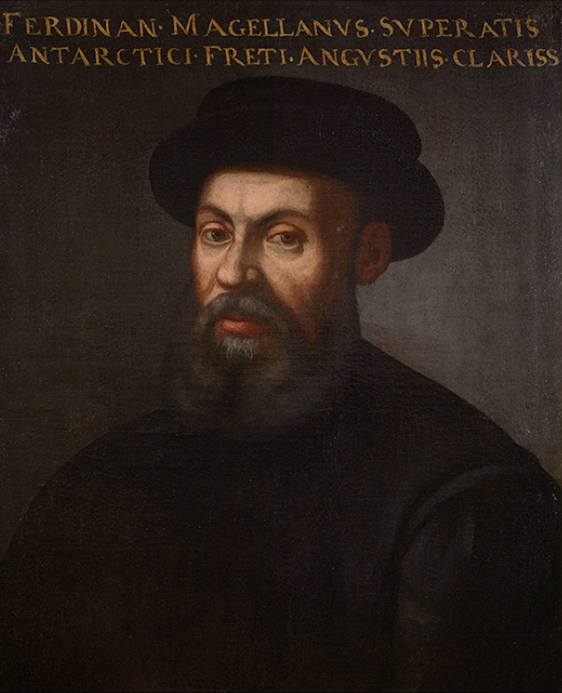The discovery of a western
hemisphere by Christopher Columbus sparked a land-grab by Spain in islands and
mainland territory. Its Iberian neighbor Portugal also had a huge expeditionary
force that had been cultivated for years through rulers such as Henry the
Navigator pushing south and eastward around Africa's Cape of Good Hope toward
India. Now that Portugal, too, looked to claim western land since it had been
granted the right to any claim south of the Canary Islands by papal bull.
Further papal bulls tried to sort the issue out, but at last the two were
satisfied only with the 1494 Treaty of Tordesillas that granted the east (most
importantly, India and its spices) to Portugal and anything 100 leagues west of
the Canaries to Spain.
Initially, the agreement
worked well. Even in 1500 when Portuguese explorers found the tip of Brazil to
be within the western reaches of their territory, the Spanish did not balk.
Problems, however, began to arise as Magellan's voyage circumnavigated the
Earth in 1519-1522. The Portuguese Empire had discovered and conquered the
Indonesian Molucca islands in 1521, filled with exotic spices like nutmeg and
cloves. Its great potential wealth caused Spain to announce that the Moluccas
lay within western Spanish territory, a point they defended by Magellan's claim
of the Philippines to the northwest of the islands. Since neither party had
discussed where the east-west lines crossed, no one had a clear answer.
The overlap debate turned
violent when Spanish king Charles V sent an expedition to found a fort in the
Moluccas. Short rounds of fighting broke out between the Spanish and Portuguese
there, and Charles V and John III determined to find the proper anti-meridian
that would be the legitimate halfway point of the line created at Tordesillas.
The best cartographers in each court made recommendations, and a treaty was
proposed at the Spanish city of Zaragoza granting Asia to Portugal and the
Pacific to Spain with the East Indies divided east of the Moluccas.
As the Portuguese reviewed the treaty, an aide happened to mention there was no formal relinquishment of the Philippines. Rather than take it as an understanding that could cause problems later, the Portuguese now demanded the islands. Despite his potential for a strong argument thanks to Magellan's claim, Charles V granted Portugal the islands. He was eager for Portuguese support (especially in gold) as he fought his wars in Italy with Francis I of France. The Portuguese demands turned out to be largely moot as Portugal set up a few trading posts but scarcely colonized the islands.
As the Portuguese reviewed the treaty, an aide happened to mention there was no formal relinquishment of the Philippines. Rather than take it as an understanding that could cause problems later, the Portuguese now demanded the islands. Despite his potential for a strong argument thanks to Magellan's claim, Charles V granted Portugal the islands. He was eager for Portuguese support (especially in gold) as he fought his wars in Italy with Francis I of France. The Portuguese demands turned out to be largely moot as Portugal set up a few trading posts but scarcely colonized the islands.
When Portugal's influence waned, particularly upon
its royal union with Spain, a new era of imperialism sprang up as the Dutch
began exploiting their previously sociable relations to seize much of
Portugal's former Pacific Empire. While the Dutch lost out in North America to
the British and Portugal held its claims in Brazil, the Pacific islands, including
the Philippines, became a fast chain under Dutch rule. Plantations proved
profitable, but without a large population, the Dutch primarily held political control
with locals carrying on their own lives.
In 1940, after the Second Sino-Japanese War had
ended with Japanese dominance in China, the United States led an oil embargo as
part of sanctions against Japanese imperialism. Britain and the Dutch followed,
and Japan took the embargo as an act of war, swooping in to seize the Dutch
East Indies and its rich oil supply. The Philippines were turned into a
fortress, intended to be the buffer with the coming war with the United States.
When that war finally did come with the US’s declaration in 1943, fighting in
the Pacific was brutal as the US and Britain worked to cut Japan off from its
fuel. After waves of atomic blasts, one even on Philippines’s largest island,
Japan was defeated.
As the world rebuilt itself
from WWII, the Philippines became a battleground in the Cold War. After
breaking away from the rest of the Dutch East Indies during the Dutch's
attempts to maintain colonial power, the independence movement on the northern
island chain proved too strong. Western-or-Soviet-backed coups were a constant
threat for decades. Today, the nation is hopeful for international investment,
although many areas are unstable as separatist movements continue.
-----
In reality, the Treaty of Zaragoza resolved the
territory debate in the East Indies and clarified spheres of influence. While
the Spanish had technically given up the right to the Philippines, the
Portuguese had no issue with later Spanish settlement there since the islands
were not suited for their spice trade. It would be won by the United States in
1898 and serve as front lines in the Pacific Theater in World War II.
-----

No comments:
Post a Comment